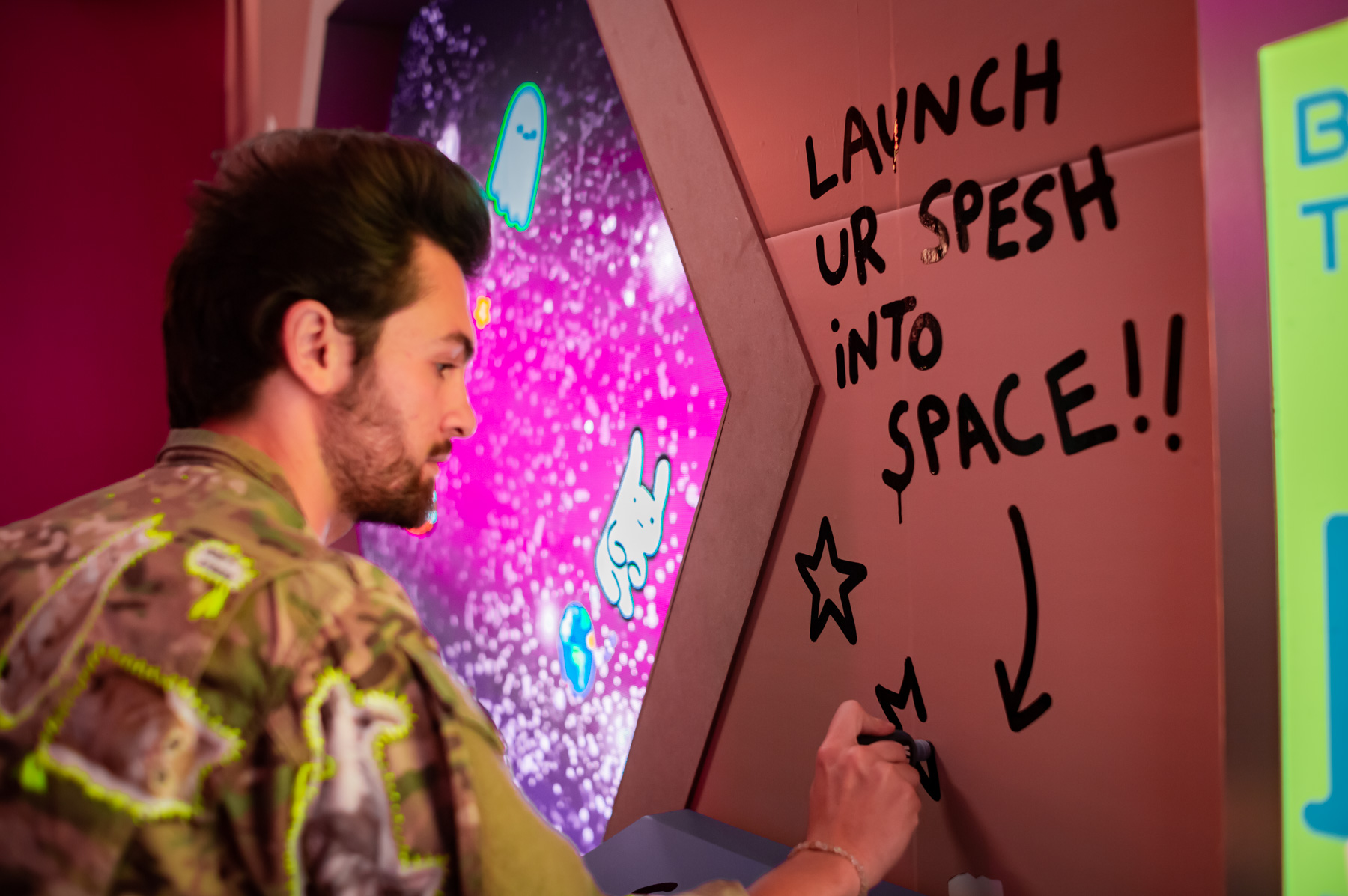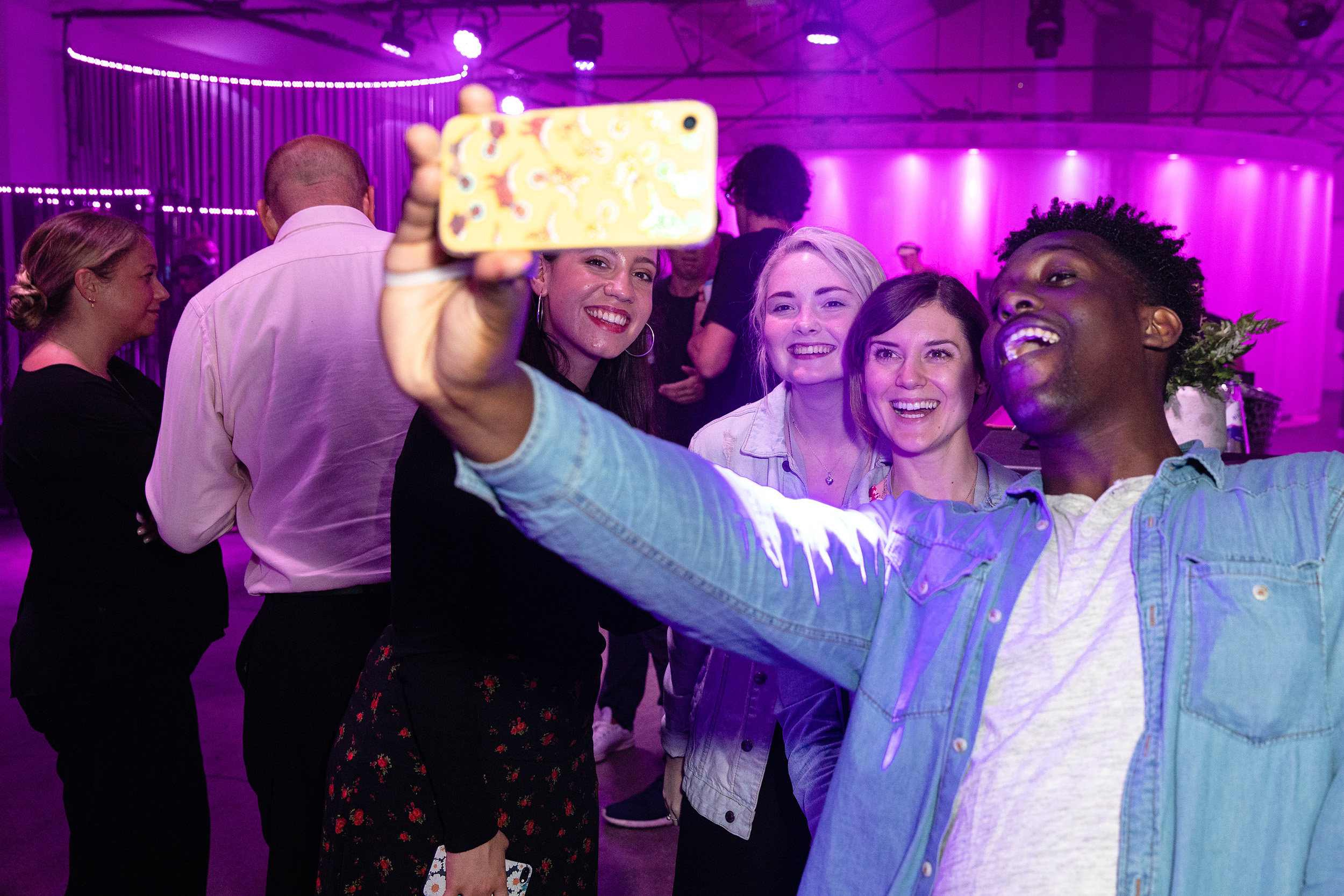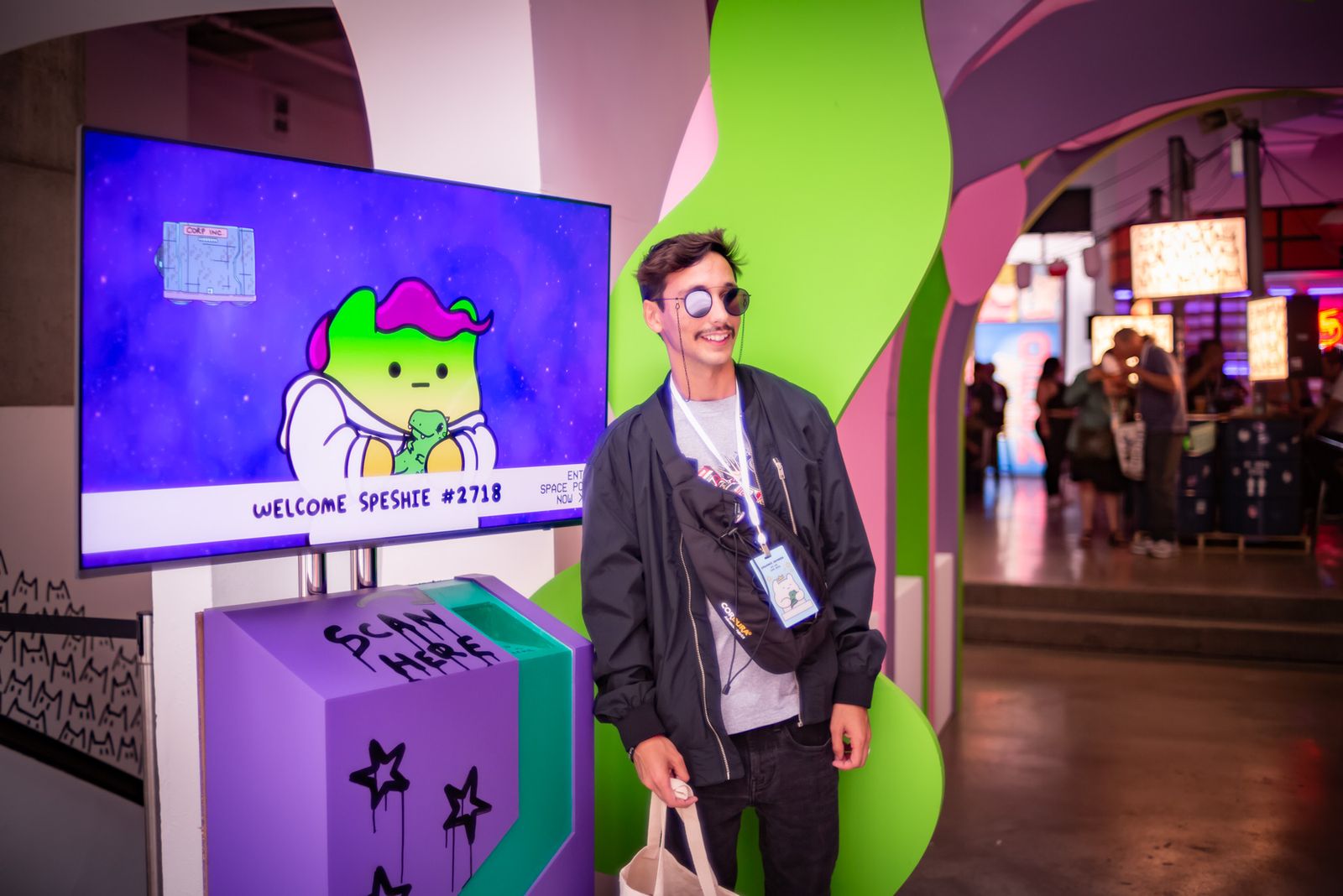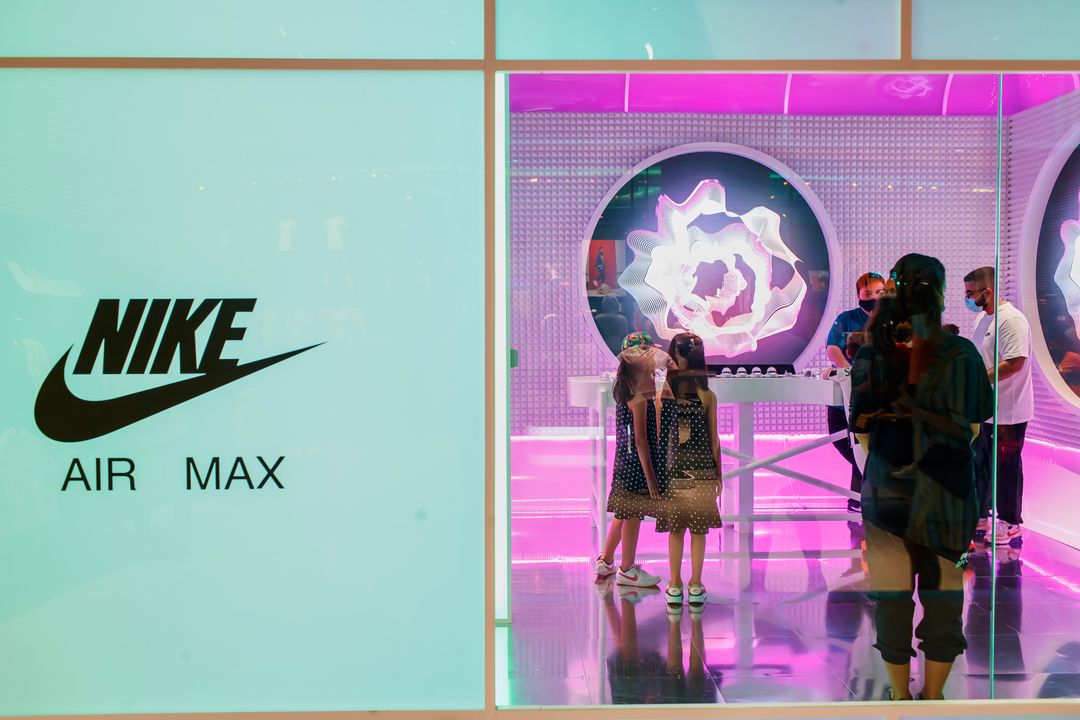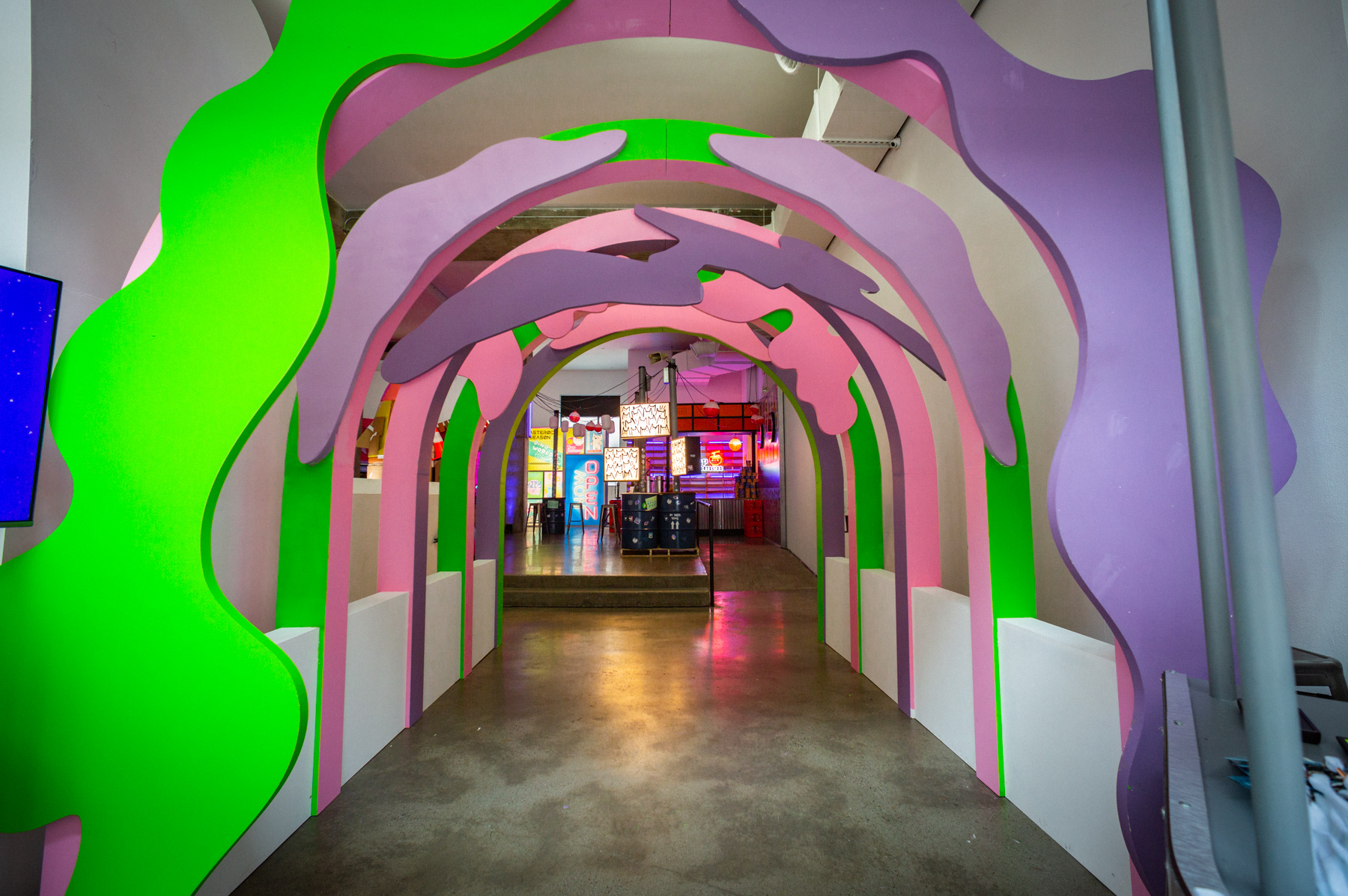
The digital revolution is here. We're in it. Yet, we're willing to die on the hill (not literally, no need to get carried away) that online communities will always thrive in IRL spaces. We believe digital worlds will always need physical counterpart spaces in order to grow and flourish.
In June 2022, HATTER worked with digital creator and artist Danny Casale, aka Coolman Coffeedan, on his NFT.NYC event. Danny, and his illustrated online world ‘Coolman’s Universe’, boasted a loyal community of over 10 million fans. Our partnership proved something that we, as experience creators, believe so completely we’ve staked our careers on it: physical experiences are a fundamental human need that can’t ever be fully replicated online.
Digital communities will continue to seek out physical spaces to connect – and that’s a positive thing for all of us, whether digital natives or novices.
We are biologically drawn to IRL interactions
The online world has enabled global interactions on a scale inconceivable just a decade ago – and things keep developing at such a remarkable pace that the nature of these interactions keep changing all the time. While there's obviously negative examples of digital communities, there is no doubting that many have found safe spaces online that they struggled to find IRL – communities based upon shared passions and common causes.
And yet… repeated studies consistently show IRL interactions are better for mental and physical health, and even longevity of life. There are myriad reasons for this, but a core facet is our ability to read non-verbal cues, i.e. facial expressions and body language. We interpret tone, manner and meaning from tiny, almost imperceptible, physical movements that simply aren’t visible or clear via digital gatherings, whatever the platform.
Also, digital cannot replicate the biological high you get from non-sexual touching, i.e. from hugging, high-fiving or even shaking hands. This is caused by the release of oxytocin, known as the ‘bonding hormone’, which triggers the release of other hormones in the the same feel-good ballpark, such as dopamine and serotonin. This rush from IRL socialising is only enhanced in a ‘live’ atmosphere that engages all of the senses.
NFT.NYC proved that IRL spaces offer added value to digital communities
Think of it like this: an NFT collector is already a member of an exclusive club in which they enjoy certain online-only benefits. An IRL spin-off event, or a permanent space, suddenly offers a membership upgrade – new added extras.
HATTER's NFT.NYC event included beautifully-designed activations that enabled people to see their NFTs come to life before their eyes. It made their investment tangible, an experience they could share with other visitors, in real time, and absorb their unedited and immediate emotional and physical responses. Visitors could also launch their NFTs into space, make them part of a Space Invader arcade game and then watch their hero, Coolman Coffeedan himself, draw their favourite characters live on stage, in-person.
NFT holders experienced their online and physical worlds colliding at this conference, the key point being that both worlds offered different versions of the same thing: community, acceptance, and shared adventures.
It works both ways – physical spaces attract new digital fans too
The Coolman Coffeedan event at NFT.NYC was one of only two at the conference that were open to the public, rather than only NFT holders. This was a deliberate decision to create a more inclusive and egalitarian space, sentiments that can be lacking in many digital cultures. This showed us that counterpart IRL spaces are a brilliant means of introducing the uninitiated to the benefits of digital communities, many of which pride themselves on the complicated nature of the architecture propping up their worlds. Exclusivity is a valuable commodity after all. Yet, that is short-term thinking when more interest will only drive the creativity, growth and profitability of online worlds.
What this means for experience creators, designers, and architects
People attending IRL digital-focused conferences are exactly the kind of people who are driving the digital revolution. And yet, they come in their thousands to meet each other and their artistic heroes in-person. This opens up an exciting and entirely novel task to brand experience agencies, creators, designers, and architects: bridging the reality gap between digital and IRL. We must navigate the fine line between enhancing, rather than diluting, what made the original digital communities so strong. And, in our view, that can only be achieved by truly understanding and respecting the world we’re entering. We are at the forefront of a revolution, where two realities meet – and we’re determined to make the most of it.




